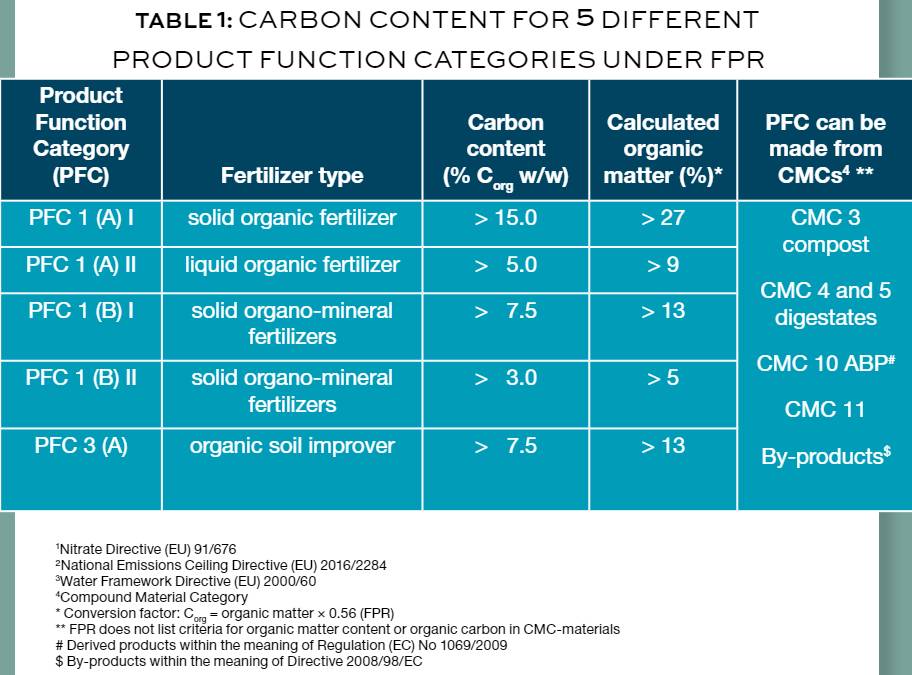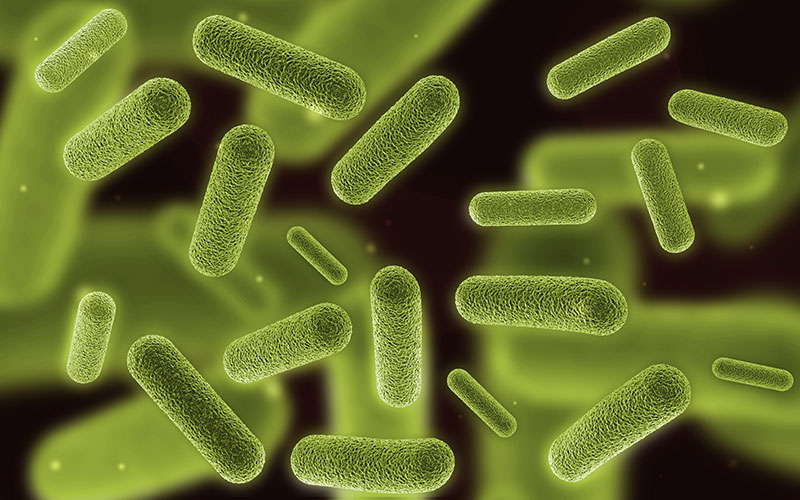How EU Regulatory Framework Hampers Carbon Sequestration
Soil carbon is essential to keep our soils healthy to cultivate our crops and ensure food production. Soil carbon content is decreasing for various reasons, but the Nitrate, Emission and Water Framework Directives play a major role too.
Increasing the carbon content of the soil can be achieved by using fertilizing materials that are high in organic matter. Such materials originate in particular from animal manure and organic fertilizing materials. However, these materials quite often contain a mixture of unfavorable trace elements, depending on the source human pathogens, as well as beneficial nutrients. All of these are regulated under various legislations at horizontal EU-level and in addition at national and sometimes even at regional level.
Three points suggest that legislations hamper reasonable increase in soil carbon due to nutritive plateaus or so-called ceilings, for example, N-ceiling, P-ceiling and ceilings for trace elements such as Cu and Zn.
Rethinking the regulatory world and taking carbon sequestration as a major target in keeping healthy soil for the next generation, it is suggested to add a new fertilizer type to the EU Fertilising Products Regulation (EU) 2019/1009 (FPR).
The FPR rules inorganic fertilizers and is an important attempt to also regulate organic fertilizers. From mid-July 2022, organic fertilizers can be sold across the entire European Union if they meet the FPR requirements and bear the CE-Mark. The EU Member States shall not restrict a fertilizer bearing the CE-mark. Obtaining a CE mark is, for example, dependent on criteria for nutrient content, source of material, safety, human pathogens, trace element, etc. For organic fertilizers, the organic carbon content is set as a minimum of at least 3% up to a minimum of 15% for a specific PFC (Table 1).

Does EU-legislation allow a reasonable restoration of the decreasing carbon content in our soils?
To increase the soil carbon content by 1% in the top 30-cm soil cultivation layer, it is estimated that about 50 tons of organic matter should be broadcasted. Solid organic fertilizers should contain a minimum of 27% organic matter according to FPR (Table 1). Based on this, multiple amounts (for example >100 t/ha in theory) fresh organic fertilizer would need to be broadcasted. Do EU legislations, as well as the FPR allow such huge amounts for correction measurements that could seriously increase organic matter content and support soil carbon sequestration?
The Nitrates Directive (EU) 91/676 (ND) introduced a nitrate concentration limit of 50 mg/L for ground and surface water. This limit is implemented in various national laws, obligatory action plans and converted into fertilizer application ceilings steering (or restricting) farm management by each member state. For example, application ceilings for N are set per crop and per soil type during the growing season in:
- The Netherlands (e.g. consumption potatoes: 96 – 275 Kg N / ha or winter wheat 160 – 245 Kg N / ha)
- Belgium (e.g. potatoes: 163 – 200 Kg N / ha or winter wheat 136 – 175 Kg N / ha).
Moreover, a ceiling for animal manure and processed products was set at 170 Kg N / ha. Since then, farmers started to use the maximum nitrogen ceilings, to feed the crop that absolutely needed the N to maximize yield and prevent crop deficiencies. Legislation did not allow them anymore to take care for organic matter content or carbon sequestration in their soils.
In areas with very intensive livestock farming national phosphate ceilings were introduced in legislation at regional level. In the Netherlands, Belgium and other countries, phosphate ceilings were put in place to prevent leaching to ground water and surface water and translated into maximum application rates. For example, application ceilings for phosphate:
- in The Netherlands are set between 40 – 120 Kg P2O5 / ha for arable crops depending on the P-content in the soil after sampling;
- and in Belgium for potatoes and winter wheat: 55 – 95 Kg P2O5 / ha.
However, since these regional ceilings were implemented, farmers started to use the P ceiling to feed the crop that absolutely needed the P to maximize yield and prevent crop deficiencies. Also here, the legislation did not allow the farmers to take care for organic matter content or carbon sequestration in their soils.
Another organic source is coming from the wastewater treatment plants producing sewage sludge. The Sewage Sludge Directive (EU) 86/287 (SSD) is currently under revision. In France, sewage sludge is put on farmland to increase organic matter and making use of the available nutrients for the soil based on for example a fertilization plan agreed with the local chamber of agriculture. The waste legislation combined with the SSD set ceilings on trace and micro elements. However, while in one country Cu (from water pipes) and Zn (from roof gutters and sewer systems) are considered beneficial micronutrients, they are considered as heavy metals in other countries, and thus cannot be applied.
These three points suggest that legislation in the EU and its Member States hamper reasonable increase in soil carbon due to the ceilings set on macronutrients (N and P) and micronutrients (Cu and Zn). It can be said, that the FPR is an optional legislation, which means complying with this horizontal requirement happens on a voluntary basis. However, from a legal perspective, other emission legislations derived from the horizontal one, and translated into national law with setting additional ceilings on nutrient applications and trace elements convert the requirements from optional to obligatory.
Organic bulk fertilization of around 50 tons organic matter (for example, >100 t/ha fresh product) to increase carbon sequestration will not be possible in many countries because this would result in exceeding either the N-ceiling, P-ceiling, micro-nutrient ceiling, or ceilings for other trace elements.
Rethinking the regulatory framework and taking carbon sequestration into account as a major target to keep healthy soil for the next generation might require the inclusion of a new fertilizer type in the FPR defined as: Carbon Sequestration.





